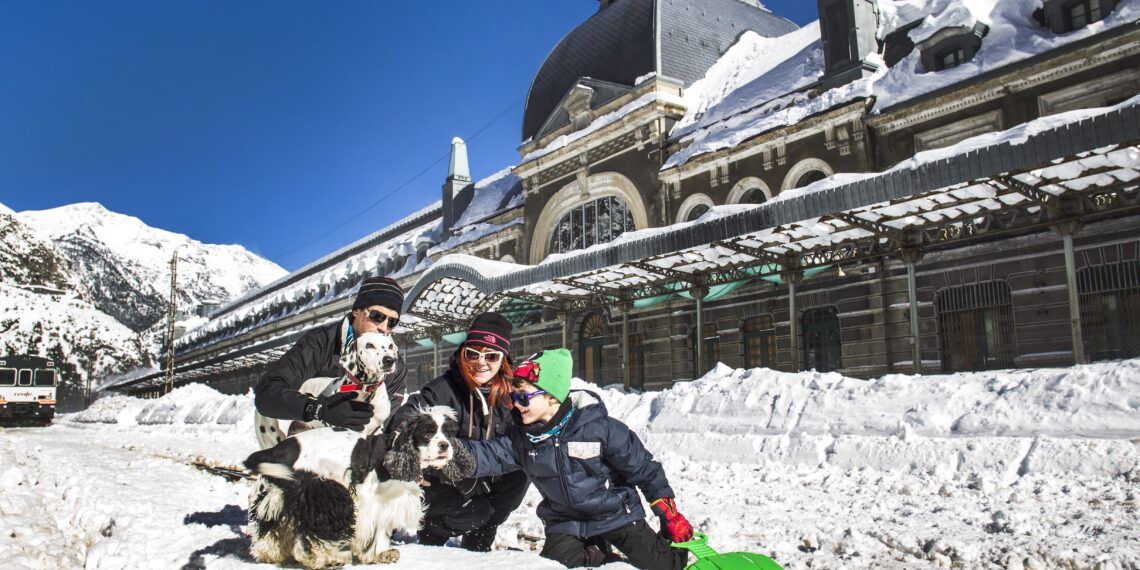Imagine yourself on a 50-year-old train departing from the Spanish town of Sabiñánigo, passing through Jaca against the backdrop of the Pyrenean landscape, until reaching Canfranc. Upon arrival, you will be greeted by a magnificent and enormous complex that spans over 242 meters in length. There are 75 doors inviting you to enter, and the number of windows in the complex matches the days of the year. The entire complex is shrouded in an atmosphere of mystery.
Now, open your eyes. You can board the train known as ‘El Canfranero’ and admire the charm of Canfranc station, which remains unchanged despite the iron graveyard with graffiti-covered corpses lurking behind it. This Pyrenean municipality is located in the Jacetania region of Huesca province, Aragón.
The former international railway station of Canfranc is a monumental architectural gem. Thanks to its iron cladding, the station has withstood the harsh climatic conditions of the Pyrenees and historical events since its construction. The station’s history began with the idea of its construction proposed in 1905 and was inaugurated in July 1928 by King Alfonso XIII. The station aimed to impress his French neighbors with an impressive display of concrete, iron, and glass, marking the first land connection between the two countries.
Fires, strikes, and premature deaths are other events in the station’s history. However, the most memorable event, which is worthy of its own novel, is the tale of tons of gold passing through the train tracks of the station under the watchful eyes of Gestapo agents.
In the 1940s, while Spain was still recovering from the Civil War (1936-1939) and Europe was in turmoil due to World War II, General Franco controlled Spain. During this time, Franco adopted a questionable stance of support for the Germans, as Hitler had aided him during the Spanish Civil War. They reached an agreement. Although an open secret in Canfranc, the existence of the agreement was not confirmed until a 40-year-old French citizen stumbled upon forgotten documents in one of the station’s carriages.
The agreement granted a group of SS officers and Gestapo men control over Canfranc’s international customs, allowing for the monthly passage of 1,200 tons of goods on the Germany-Switzerland-Spain-Portugal route, including gold looted by the Nazis from Jews.
Some Canfranc locals remember helping load and unload the wagons without knowing the contents of the parcels. If you cannot speak with any of them, the station itself tells their stories with a clear voice and an impressive display of lights and sounds. This occurs on Friday, Saturday, and Sunday nights. The Canfranc Tourist Office offers guided tours lasting 45 minutes of the underground passage and the impressive lobby, which still retains original elements.










Discussion about this post